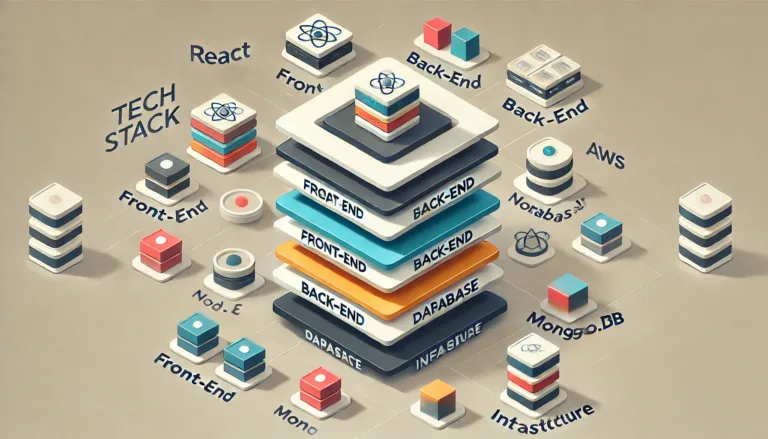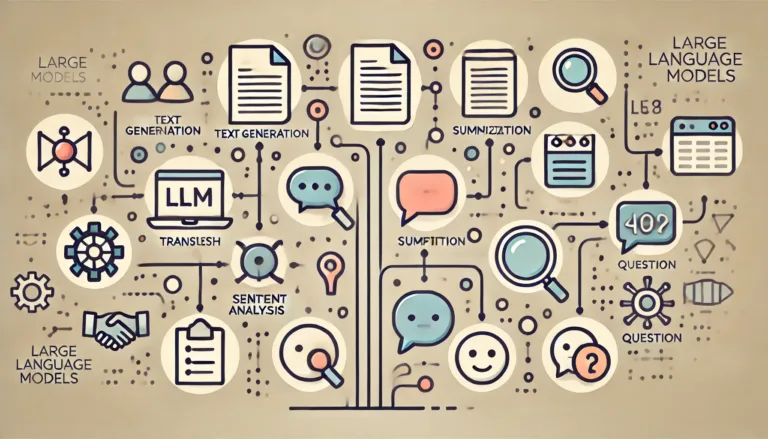Introduction
Finance is the backbone of the global economy, and AI is poised to revolutionize how we manage money, investments, and risk. From predicting stock market trends to detecting fraudulent transactions, AI is transforming the financial landscape with speed and precision. Whether you’re interested in algorithmic trading, financial analytics, or credit scoring, the possibilities in AI-driven finance are vast. In this article, we’ll explore 32 project ideas that can help you navigate and innovate in the complex world of finance.
Beginner-Level AI Projects in Finance
For those new to AI in finance, these beginner-level projects offer a solid foundation in understanding the key applications of AI in the financial sector.
1. Stock Market Prediction
- Objective: Develop models that predict stock market trends using historical data.
- Tools and Technologies: Python, TensorFlow, Scikit-learn.
- Learning Outcomes: Learn how to preprocess financial data, create time-series models, and evaluate predictive accuracy.
2. Credit Scoring Models
- Objective: Use AI to improve credit scoring by analyzing credit history and financial behavior.
- Tools and Technologies: Python, Scikit-learn, logistic regression.
- Learning Outcomes: Understand the factors that influence credit scores and how AI can refine credit risk assessment.
3. Fraud Detection
- Objective: Build systems that detect fraudulent transactions by identifying anomalies in financial data.
- Tools and Technologies: Python, TensorFlow, anomaly detection algorithms.
- Learning Outcomes: Learn about various fraud patterns and how machine learning can prevent financial fraud.
4. Personal Finance Management
- Objective: Create AI tools that help individuals manage their finances by tracking spending and providing budget recommendations.
- Tools and Technologies: Python, mobile development frameworks, machine learning.
- Learning Outcomes: Explore the intersection of AI and personal finance, focusing on user-friendly financial solutions.
5. Algorithmic Trading
- Objective: Develop AI algorithms that automatically trade stocks or cryptocurrencies based on predefined strategies.
- Tools and Technologies: Python, algorithmic trading platforms, TensorFlow.
- Learning Outcomes: Gain insights into algorithmic trading and how AI can optimize trading strategies for better returns.
6. Loan Approval Systems
- Objective: Use AI to streamline the loan approval process by assessing the risk profile of applicants.
- Tools and Technologies: Python, decision tree algorithms, TensorFlow.
- Learning Outcomes: Learn how to create models that accurately predict loan defaults and improve lending decisions.
Intermediate-Level AI Projects in Finance
As you gain more experience, these intermediate projects will challenge you to apply more complex algorithms and work with larger datasets.
7. Customer Service Chatbots
- Objective: Create AI-powered chatbots for financial institutions to assist customers with their queries.
- Tools and Technologies: Python, Natural Language Processing (NLP) libraries, chatbot frameworks.
- Learning Outcomes: Learn about NLP and how AI can enhance customer service in the finance sector.
8. Financial Risk Analysis
- Objective: Build models to assess and manage the risk of investment portfolios.
- Tools and Technologies: Python, Monte Carlo simulations, TensorFlow.
- Learning Outcomes: Understand risk management principles and how AI can help mitigate financial risks.
9. Expense Tracking Tools
- Objective: Develop AI-powered tools that automatically categorize and track expenses for better financial management.
- Tools and Technologies: Python, machine learning algorithms, mobile app development.
- Learning Outcomes: Learn how AI can help individuals and businesses keep track of their financial health.
10. Blockchain Analysis
- Objective: Use AI to analyze blockchain transactions and detect suspicious activities or anomalies.
- Tools and Technologies: Python, blockchain platforms, anomaly detection models.
- Learning Outcomes: Understand the basics of blockchain technology and how AI can be applied to ensure transaction security.
11. AI for Wealth Management
- Objective: Create systems that provide personalized wealth management advice based on user profiles and financial goals.
- Tools and Technologies: Python, recommendation algorithms, financial datasets.
- Learning Outcomes: Explore how AI can tailor investment advice and strategies to individual needs.
12. Insurance Underwriting
- Objective: Develop AI tools for more accurate insurance underwriting by analyzing risk factors.
- Tools and Technologies: Python, machine learning algorithms, actuarial data.
- Learning Outcomes: Learn about the insurance industry and how AI can improve underwriting processes.
13. Market Sentiment Analysis
- Objective: Analyze social media and news to gauge market sentiment and predict market movements.
- Tools and Technologies: Python, NLP libraries, sentiment analysis tools.
- Learning Outcomes: Gain skills in sentiment analysis and understand its impact on financial markets.
14. AI in Hedge Funds
- Objective: Use AI to optimize hedge fund strategies by analyzing large datasets and predicting trends.
- Tools and Technologies: Python, machine learning algorithms, financial databases.
- Learning Outcomes: Learn about hedge funds and how AI can enhance their investment strategies.
15. Predicting Real Estate Prices
- Objective: Develop models that predict real estate market trends using historical data.
- Tools and Technologies: Python, TensorFlow, regression models.
- Learning Outcomes: Understand the factors affecting real estate prices and how AI can predict market shifts.
Advanced-Level AI Projects in Finance
For those with significant experience, these advanced projects involve cutting-edge research and the integration of AI with other emerging technologies.
16. Cryptocurrency Trading Bots
- Objective: Create AI-powered bots that autonomously trade cryptocurrencies based on market analysis.
- Tools and Technologies: Python, TensorFlow, cryptocurrency exchanges APIs.
- Learning Outcomes: Delve into the volatile world of cryptocurrencies and learn how AI can automate trading strategies.
17. Financial Document Analysis
- Objective: Automate the analysis of financial documents like balance sheets and income statements using AI.
- Tools and Technologies: Python, NLP libraries, document processing tools.
- Learning Outcomes: Learn how AI can streamline financial analysis by automating document review and interpretation.
18. AI for Tax Preparation
- Objective: Build tools that assist in preparing tax returns by analyzing financial data and suggesting deductions.
- Tools and Technologies: Python, tax software APIs, machine learning.
- Learning Outcomes: Explore how AI can simplify the complex process of tax preparation for individuals and businesses.
19. Banking Customer Analytics
- Objective: Use AI to analyze customer behavior in banking, helping institutions tailor their services.
- Tools and Technologies: Python, customer segmentation models, machine learning.
- Learning Outcomes: Understand customer analytics and how AI can improve customer engagement in banking.
20. Investment Recommendation Systems
- Objective: Develop systems that recommend investments based on user profiles and market conditions.
- Tools and Technologies: Python, recommendation engines, financial data APIs.
- Learning Outcomes: Learn how AI can provide personalized investment advice and optimize portfolios.
21. AI for Microfinance
- Objective: Use AI to improve lending practices in microfinance by assessing the creditworthiness of borrowers.
- Tools and Technologies: Python, risk assessment models, financial inclusion databases.
- Learning Outcomes: Explore the role of AI in promoting financial inclusion and improving microfinance operations.
22. AI in Venture Capital
- Objective: Develop tools that assess startup potential and guide venture capital investments.
- Tools and Technologies: Python, machine learning algorithms, startup databases.
- Learning Outcomes: Learn how AI can assist venture capitalists in making more informed investment decisions.
23. AI-Powered Budgeting Tools
- Objective: Create tools that help users stick to their budgets by analyzing spending habits and offering suggestions.
- Tools and Technologies: Python, budgeting apps, machine learning algorithms.
- Learning Outcomes: Understand the intersection of personal finance and AI, focusing on budgeting and financial discipline.
24. AI for Regulatory Compliance
- Objective: Build systems that ensure compliance with financial regulations by analyzing transactions and reporting data.
- Tools and Technologies: Python, regulatory technology (RegTech) tools, compliance databases.
- Learning Outcomes: Explore the growing field of RegTech and how AI can help financial institutions navigate complex regulations.
25. Predicting Economic Indicators
- Objective: Use AI to predict economic indicators like GDP growth, inflation rates, and unemployment levels.
- Tools and Technologies: Python, time-series models, economic datasets.
- Learning Outcomes: Learn how macroeconomic factors are analyzed and predicted using AI.
26. Financial Market Analysis Tools
- Objective: Develop AI tools for comprehensive market analysis, providing insights into stock, bond, and commodity markets.
- Tools and Technologies: Python, data visualization libraries, financial databases.
- Learning Outcomes: Gain skills in market analysis and understand how AI can provide a competitive edge in finance.
27. AI for Peer-to-Peer Lending
- Objective: Improve P2P lending platforms with AI by matching borrowers with suitable lenders based on risk assessment.
- Tools and Technologies: Python, machine learning, lending platform APIs.
- Learning Outcomes: Explore how AI can enhance the efficiency and security of P2P lending.
28. Predicting Bankruptcy
- Objective: Build models that predict the likelihood of bankruptcy for companies based on financial metrics.
- Tools and Technologies: Python, logistic regression, financial statement analysis.
- Learning Outcomes: Understand the factors leading to bankruptcy and how AI can predict financial distress.
29. AI for Philanthropy
- Objective: Use AI to optimize charitable donations by predicting the impact of contributions and advising donors.
- Tools and Technologies: Python, impact assessment models, charity databases.
- Learning Outcomes: Learn how AI can contribute to social good by optimizing philanthropic efforts.
30. Credit Card Fraud Detection
- Objective: Develop advanced models to detect credit card fraud by analyzing transaction patterns.
- Tools and Technologies: Python, anomaly detection algorithms, credit card transaction datasets.
- Learning Outcomes: Dive deep into fraud detection and learn how AI can safeguard against financial crimes.
31. AI in Crowdfunding
- Objective: Analyze crowdfunding campaigns to predict their success and optimize funding strategies.
- Tools and Technologies: Python, machine learning, crowdfunding platform APIs.
- Learning Outcomes: Understand the dynamics of crowdfunding and how AI can enhance campaign outcomes.
32. Financial Literacy Tools
- Objective: Create AI-powered tools that educate users on financial concepts and help them make informed decisions.
- Tools and Technologies: Python, educational platforms, interactive learning models.
- Learning Outcomes: Explore how AI can improve financial literacy and empower individuals to manage their finances effectively.
Conclusion
The intersection of AI and finance offers a fertile ground for innovation. With the power to analyze vast amounts of data and make decisions in real-time, AI is not just improving financial services—it’s redefining them. As you dive into these projects, consider the profound impact your work could have on making financial systems more robust, transparent, and accessible. From there, we’ll explore how AI is creating new dimensions in Gaming, making games more immersive and interactive.









